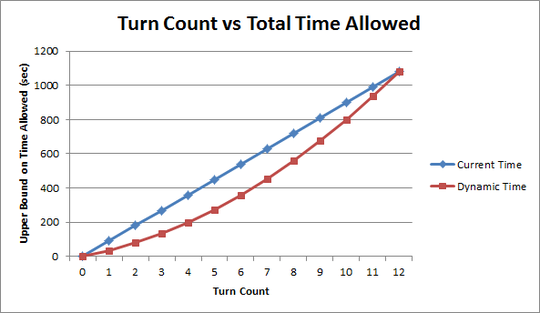Overview: Putting yourself in the player’s shoes is one of the easiest ways to make sure the overall experience of your game is fun. While playtesting, certain aspects of your game may stick out like a sore thumb that went unnoticed in the initial design. As an example, I will analyze the most flawed design decision in Blizzard’s new turn-based card game, Hearthstone.
Hearthstone, for those that are unfamiliar, is a turn-based card game currently in open beta. The most irritating design decision from a player’s point of view is the choice to set the time limit each turn to a flat amount. Each player is allowed 90 seconds per turn, every turn, for the entire game. In the first few turns this time limit is excessive, and there exists no incentive to quickly play your moves. During the mid-game, 90 seconds is a very appropriate amount of time. In the later stages of the game, 90 seconds is often times barely enough as the number of possible plays increases dramatically with turn count. According to my experience, this excessive limit makes the early game drag on. I often end up using my second monitor to do other tasks while I wait for my opponent to make a move. The midgame is the most enjoyable part of the game, from a timing perspective. There is adequate time to think and play. Then later on I feel rushed to make a move. Calculating the possible plays and counter plays takes time.
I suggest one of the two following timing methods to improve the gameplay experience:
The first is just a copy of the standard chess timer. You have x minutes for the entire game and your timer counts down only while it is your turn. This method gives the player an incentive to play quickly early on in order to save time for later turns. However, the one big drawback to this method is those players who AFK and let their timer run out. This means that the opponent can’t play either for the whole x minutes.
A better approach is to make the turn time limit scale with the turn count. Having scaling turn duration appropriately increases the pace of the game early on and allows for more critical thinking in the later stages of the game. This dynamic turn time (35 seconds + 10 every turn) meets the current flat 90 second turn time limit at turn 12, which is not an unreasonable number for the average game length. Thus the upper bounds of both timing methods are the same (1080 seconds for 12 turns). Overall, I believe that the games will be more enjoyable with this new method.


Write a comment